Group F. Holden, Suzy & Jana
We started our day early with breakfast at 7 a.m., since we had an eight-hour drive ahead to Kakamega Forest. Lunch would be on the road, so we were given boxes to pack sandwiches, boiled eggs, fruit and vegetables, meat, cheese, and snacks (including mandazi – a type of donut) for the journey.
After breakfast, we took down our tents and helped the staff with the big rain shelter. We rolled it up while Dr. Wang filmed us and sang “Row, row, row your boat …” So helpful!
Once everything was packed, we hit the road. We passed through many small villages along the way. Most houses were made of iron sheets, and people seemed to rely mainly on small-scale farming and livestock. There were roadside stalls selling maize, potatoes, and fruits – likely family-run businesses taking advantage of the highway traffic.
Things changed as we got closer to Nakuru. The buildings became more solid and started using brick and cement. We began to see signs of city life: markets, schools, hospitals, and even overpasses. Clothing was more modern, and commercial buildings, especially restaurants and service shops, lined the roads.
We made a short stop at a gas station in Nakuru (and some of us bought drinks and junk food), then continued on toward the forest.
Once it started raining we began to notice many things that had been discussed yesterday with regard to raising water levels. For instance, many families’ reliance on farming meant replacing forest land with agricultural sites which do not absorb as much water. We could see a lot of surface-land precipitation runoff that seemed to be mostly directed downhill of the catchment area. This meant that most of this precipitation is a main actor of rising water levels in nearby lakes and streams which contributes to land erosion and has other downstream implications.
There also seemed to be a lot of sediment mixing as the water traveled through streets, streams, markets, farm lands and even some forest land. With 4 more hours left until our final destination, we had plenty of time to follow this journey of precipitation in western Kenya. About an hour or two later most of the land surface appeared to be dry, likely due to runoff rather than infiltration causing overflow and flooding downstream which we managed to get a Quick Look at.
Finally, we were getting close. As we drove through Kakamega County we passed by many villages where we saw where Kevin grew up and we drove past Cletus’ house. Since our bus pretty much looked like a giant ‘tank’ we seemed to draw a lot of the locals’ attention. Many people smiled and waved at us which was a very lovely chance for us to briefly interact with the locals. At this point we saw another shift in local where many people seemed to rely on woodwork and making furniture for a living. We occasionally also saw some events with music, schools and churches.
We arrived at Kakamega forest at 6:30 and were held up at the gate to collect everyone’s student cards for access to the park. Once at camp, we rushed to set up our tents before dark. The campsite is an open field in the jungle with some small circular shelters called bandas, there is also a large covered area where we set up our dining area. Due to all the rain it was quite muddy. The abundance of insects in the jungle quickly became apparent. John, Kevin, Chenzen and Joseph were very fast at cooking dinner so it was ready by the time the tents were set up at 8:30. After dinner some of us went on a walk around the perimeter of the camp at the forest edge with our headlamps where we saw a weevil and a large spider, we tried shining our lights into the canopy to spot any eyes reflecting back at us.
- Packing up
- Packing up
- Packing up
- Packing up
- On the way!
- Our route. Travel time is longer than shown as we are traveling in a large overland truck
- On the bus
- On the bus
- Delta Supermarket. Kakamega
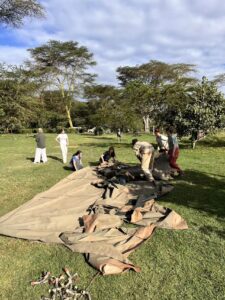
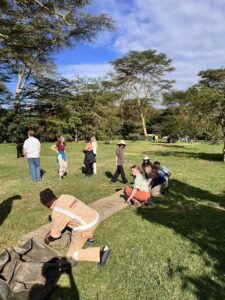
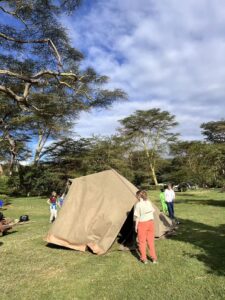
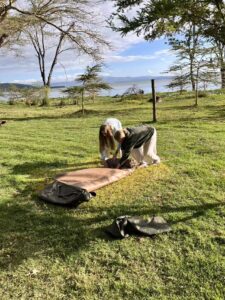
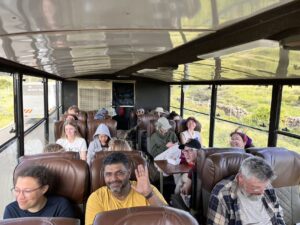

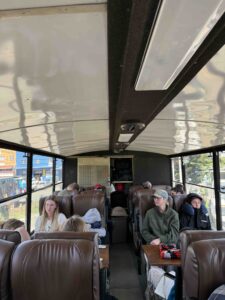
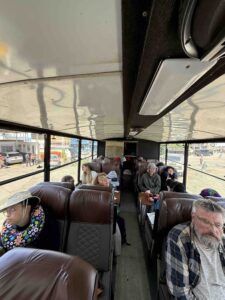
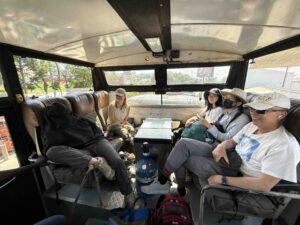
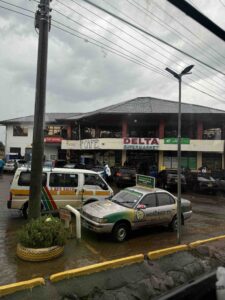
Leave a Reply